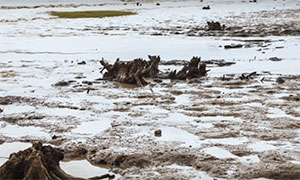|
The MAP News
489th Edition Feb 29, 2020 |
|
FEATURE Protect Our Future calls for mangrove conservation  Protect Our Future members marked Global Wetlands Day on Monday by protesting the destruction of mangroves at an Old Prospect Road site after a developer removed the vegetation and filled the area without planning permission. The group met at the site with Martin Keeley, director of the Mangrove Education Project in Cayman, to talk about the significance of losing yet another mangrove site to development. “The Department of Environment has put together a Mangrove Conservation Plan. It’s been sitting in Cabinet for six months, seven months, and nobody’s acting on it and we need that in place so that there is some kind of control over this sort of thing because this is happening on a constant basis,” Keeley said. Keeley, who has worked for 20 years on an international Mangrove Action Project, spoke about the significance of Cayman’s wetlands and the current lack of action in protecting them. He said that if the Mangrove Conservation Plan is approved by Cabinet, it will protect all mangrove species and allow the DoE to take enforcement action into their own hands. Mangroves act as juvenile nurseries for 60-70% of species found on coral reefs, and stores large quantities of carbon dioxide in their roots, Keeley said. READ MORE GLOBAL Device mimics the mangrove’s water-purifying power  GLOBAL – The mangrove tree survives in its subtropical habitat by efficiently converting the salty water of its environment into fresh water — an engineering feat that has long baffled scientists. Now, a team of researchers in the lab of Yale engineering professor Menachem Elimelech has developed a water-purifying device that mimics the mangrove. In addition to offering a better understanding of plants’ plumbing systems, it could lead to new desalination technologies, his research team said. The results appeared Feb. 21 in Science Advances. “We’re showing the mechanism that’s been proposed for how mangroves work,” said co-author Jay Werber, a former graduate student in chemical and environmental engineering in Elimelech’s lab. “We’re not biologists, but we’re coming at this from an engineering perspective.” The device, which the researchers call an artificial mangrove, combines the desalinating effects of the mangrove’s root, the capillary pumping of the leaves, and the water-conducting capability of the stem. Key to its success is its ability to generate a high level of negative pressure, similar to what you create when drinking through a straw. In the synthetic mangrove, evaporation from specially designed membranes — acting as “leaves” — creates a large negative pressure, which drives desalination of salty water through a semi-permeable membrane “root.” READ MORE International mangrove forest experts suggesting optimistic cause for global mangrove conservation  GLOBAL - More than a decade ago, a team of mangrove experts warned that mangrove forests were being lost faster than almost any other ecosystem, including coral reefs and tropical rainforests. Nonetheless, the situations are getting better now. An international team of 22 researchers led by National University Singapore (NUS) from 24 institutes including Dr Stefano Cannicci from The Swire Institute of Marine Science and School of Biological Sciences, the University of Hong Kong (HKU), found that there is now cause for optimism, with the global loss rate of mangrove forests less alarming than previously suggested. After studying various earlier presented works, the team found that globally, mangrove loss rates have reduced by almost an order of magnitude between the late 20th and early 21st century – from what was previously estimated at 1% to 3% per year, to about 0.3% to 0.6%. The drastic drop in the loss rate is attributed greatly to the successful mangrove conservation efforts. This heightens conservation optimism amongst broader projections of environmental decline. “The team deduced that the reduction in mangrove global loss rates has resulted from improved monitoring and data access, changing industrial practices, expanded management and protection, increased focus on rehabilitation, and stronger recognition of the ecosystem services provided by mangroves,” explained Associate Professor Daniel Friess from the Department of Geography of NUS. READ MORE AFRICA Egypt launches project to plant mangrove trees along Red Sea coast  EGYPT – Egypt has announced an ambitious plan to expand mangrove forests by launching the largest mangrove planting project along the Red Sea, according to Sayyed Khalifa, director of the mangrove forestry project in the Governorate. The project is funded by the Ministry of Scientific Research, in cooperation with the ministries of Agriculture and Environment and the Red Sea Governorate, he said. The project comes as part of efforts to address the risks brought on by climate change, according to Khalifa. Khalifa added in a press statement on Thursday that the project also comes as part of Egyptian President Abdel Fattah al-Sisi’s directives to expand environmental tourism projects and take advantage of natural reserves. Four plant nurseries have been established for mangrove trees in the Safaga, Hamata, and Shalateen areas of the Red Sea Governorate, as well as the Nabaq nature reserve in South Sinai. READ MORE How South Africa’s mangrove forests store carbon and why it matters  SOUTH AFRICA - Scientists around the world are looking for ways to remove carbon dioxide from the atmosphere. This gas is a natural component of the atmosphere, released by processes of respiration and decomposition of organic matter. But human activities that involve the burning of fossil fuels such as coal have released a lot of carbon dioxide into the atmosphere since the Industrial Revolution of the 1800s. The accumulation of carbon dioxide in the atmosphere is directly linked to global warming. Climate-related risks for the environment and for human societies have been observed in the form of increased mean temperatures and a higher frequency at which extreme events – heatwaves, droughts, wildfires, floods, and storms – are occurring around the world. One of the natural ways that carbon dioxide can be taken out of the atmosphere is the process of photosynthesis by plants. Plants absorb carbon dioxide, use the carbon for their growth, and release the oxygen back into the air. This forms part of the global carbon cycle and allows ecosystems to act as “carbon sinks” for atmospheric carbon. Marine ecosystems are particularly interesting as potential carbon sinks or stores. Coastal wetlands like mangroves, salt marshes and seagrasses can store more carbon than terrestrial ecosystems. This is because the waterlogged soils preserve the organic carbon and prevent decomposition. The soils also build up vertically over time and if left undisturbed, this “blue carbon” can accumulate for thousands of years. READ MORE AMERICAS Millions of people’s food supply depends on super-urinating fish  BAHAMAS - For the mangrove forests that line the coast of Abaco Island in the Bahamas, fish pee is a precious resource. While fish such as cubera and gray snappers roam the mangroves in search of a meal, they excrete “fish pee” through their gills which, among other substances, contains the valuable nutrient nitrogen. However, it turns out that some of these fish do more than their fair share of this important and messy work, scientists reported February 26 in the journal Science Advances. These MVPs spend more time swimming around their mangrove homes than other members of the same species. The busy fish spread more nitrogen around during their wanderings, fertilizing the mangrove trees and algae growing on their roots so they can grow lush and feed the fish, crabs, and other animals that people depend on in turn. “There are certain individuals that really do have disproportionate roles in the cycling and distribution of nutrients in these [ecosystems],” says Jacob Allgeier, a coastal ecologist at the University of Michigan in Ann Arbor and coauthor of the new study. “It’s essentially fueling this food web that is so important for the subsistence of millions of people…throughout the world.” Scientists have long understood that a diverse array of species of plants, animals, and other organisms is critical for healthy, resilient ecosystems. Researchers have also recognized that certain so-called keystone species can play an outsized role in keeping an ecosystem running smoothly—such as mangrove trees that buffer the coastline from storms, hold soil in place to prevent erosion, and shelter many kinds of animals. READ MORE Hurricanes fertilize mangrove forests, shape coastal landscape of the Florida Everglades 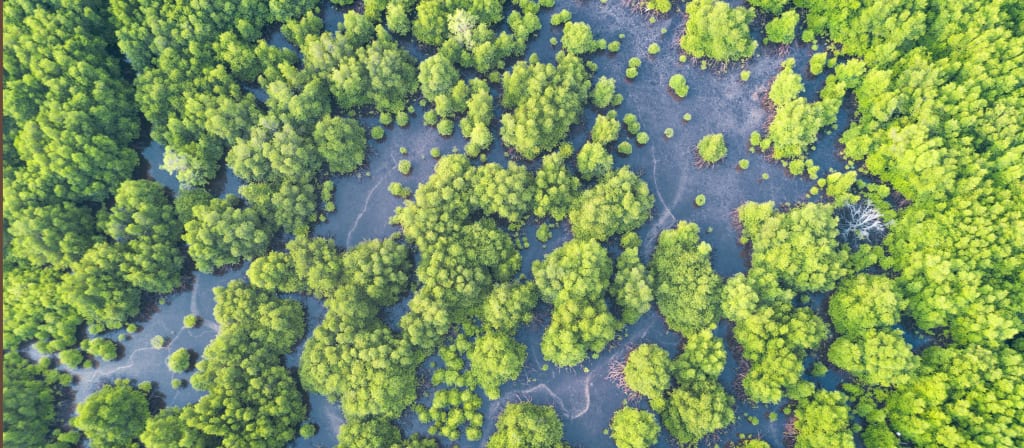 USA - The destructive power of a hurricane appears to do plenty of good for mangroves in the Florida Everglades. When Category 3 Hurricanes Wilma (2005) and Irma (2017) struck Florida, mangroves took a beating, particularly in the west coast. Trees lost their canopies. Taller ones snapped and several were uprooted. Seedlings were scattered to the winds. Storm surge partially submerged trees on the front line. Then the storm surges deposited gray, phosphorus-rich mineral sediment from the ocean floor on top of mangrove soils. That sediment increased phosphorus concentrations in the soil, fueling mangrove regeneration and recovery, according to a new study conducted by researchers at FIU, Louisiana State University, and William & Mary. “When you hear about hurricanes, they create negative impacts to the coastal landscape because of infrastructure damage and ecosystem damage for mangrove forests,” said Edward Castañeda, an FIU research assistant professor and the study’s lead author. “When you do these studies and you dig into information for 20 years, you realize there’s a positive side to these storms.” Using data from the Florida Coastal Everglades Long Term Ecological Research program funded by the National Science Foundation, Castañeda and fellow researchers realized these storms have a positive effect and were able to help mangroves increase their soil elevation, facilitate their rapid recovery and help their young branch out and find new homes. It’s a welcome impact from an otherwise destructive force of nature as mangrove forests do plenty of good for people. They blunt the impact of hurricanes. They absorb damaging winds and prevent floodwaters from moving farther inland. They bear the brunt of the wind and storm surge, so people living in developed areas don’t have to. READ MORE Mangroves on the move: Habitat restoration efforts underway VIRGIN ISLANDS – 0n the eastern end of Jost Van Dyke, where sunshine beats down on expansive white beaches, is a quiet little inlet. The pool is sheltered from crashing waves by a line of spray-soaked boulders. On its surface floated two white plastic buckets filled with several dozen mangrove seedlings. New efforts are under way to restore mangroves in the Virgin Islands, especially where previously healthy forests were damaged by the 2017 hurricanes. With new funding from the Governor’s Office, a team of researchers is taking the lead in giving seedlings a better shot at growing to maturity. Conservation scientist Dr. Louise Soanes, a consultant to the Department of Disaster Management on the SMART Communities Project, said the funding helped supply materials for needed habitat structures, working in tandem with other community-based restoration efforts. The SMART Communities Project focuses on community-based disaster risk reduction and local climate change-based initiatives, with support from the Community Disaster Risk Reduction Fund managed by Caribbean Development Bank. The mangrove replanting is part of a larger effort, called “Establishing Flood-Resilient SMART Communities through Non-Government Partnerships,” to help residents be better prepared for natural disasters. This nearly $1.2 million project began in June 2017 and focuses on Jost Van Dyke as well as Sea Cows Bay, East End and Long Look on Tortola. READ MORE ‘Mangrove massacre:’ DEP investigating mangroves ripped out  USA - More mangroves have been ripped out and damaged at Tropicana Park in Cape Coral and this isn’t the first time. The city ripped out mangroves near Four Mile Cove last summer and is facing fines. Now, the state is investigating. It’s almost deja vu for Alyn Kay. “We have more mangrove destruction in one of the city’s parks,” he said. Kay sent in pictures of what he calls a “mangrove massacre” to the Department of Environmental Protection. The Department confirmed they are looking into it, but a Cape Coral spokesperson said in an email, “The city has not performed any mangrove trimming at this site.” The Florida DEP enforces the Mangrove Act, which regulates the trimming and alteration of mangroves. Recent, we learned Cape Coral is on the hook for thousands of dollars in penalties and fines for ripping up mangroves at the city’s Four Mile Cove. READ MORE ASIA Indiscriminate cutting of Mangrove trees creating havoc in West Bengal's Sundarbans 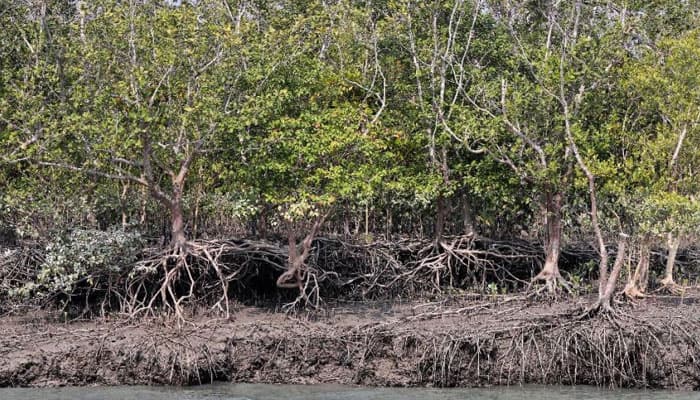 BANGLADESH – Indiscriminate cutting of Mangrove trees due to prawn culture and fishing by a section of local communities is creating havoc in the Sundarbans – the largest continuous mangrove forest in the world along the Bay of Bengal say environmentalists. For decades, the mangrove belt of Sundarbans has witnessed cutting of mangrove tress by a section of local communities in certain areas especially in the reserve forests administered by two districts - North and South 24 Parganas district of West Bengal. Experts say that local communities are increasingly engaging in prawn culture and fishing in these areas. Spanning more than 10,000 square kilometres, the Sundarbans region of Bangladesh and India is the biggest mangrove forest in the world and also the most critical area for Bengal tiger survival. Sprawled out across 6,017 square kilometers, the Bangladesh side of the forest covers nearly 60 percent of the total area of the Sundarbans. The rest is in India in the state of West Bengal. A recent incident has brought to light how the Mangrove trees were being cut at Basanti block’s Bharatgarh gram panchayat’s Anandabad area. The trees were being felled for over a week before authorities got to know of the matter. READ MORE Global investors exposed to mangrove deforestation linked Southeast Asian shrimp industry 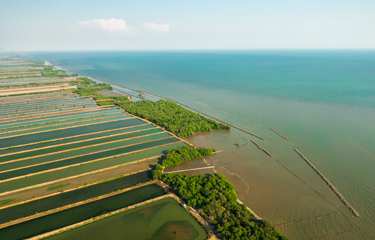 THAILAND - Shrimp producers in Southeast Asia – and the investors backing them – face financial risks from mangrove deforestation, according to a recent report from Planet Tracker. Mangrove forests benefit coastal ecosystems in a multitude of ways, including preventing coastal erosion, protecting inland areas from storm surges, filtering water, and providing nursery habitat for many fish species. Though they only account for 1 percent of carbon sequestration from forests, they make up 14 percent of carbon sequestration from the ocean. But mangroves are disappearing at an alarming rate. Globally, the rate of destruction of mangrove forests compared to their total area is five times higher than rainforests, according to Planet Tracker. In Southeast Asia, shrimp farming is the cause of 30 percent of mangrove deforestation and coastal land use change. That deforestation threatens the ecological sustainability of the shrimp industry, and its financial viability. Investors around the world could be at risk as rules come into force preventing the importation of products linked to past and future deforestation, according to Planet Tracker Director of Research Matthew McLuckie. Overproduction has led to falling prices, which in turn have caused large-scale commercial producers to expand capacity so they can protect supply chains, according to the report. These low prices offer producers few market incentives to invest in costly sustainability systems. This race to the bottom means that environmental conditions are expected to deteriorate and deforestation is expected to increase. READ MORE |
CHILDREN'S ART CALENDAR
|
|
Mangrove Action Project Click here to view past newsletters
|
|
Search News Archive
Friday, February 28, 2020
MAP News Issue #489 - Feb 29, 2020
Saturday, February 15, 2020
MAP News Issue #488 - Feb 16, 2020
|
The MAP News
488th Edition Feb 15, 2020 |
|
FEATURE World Wetlands Day: Anup Mathew on Mangrove Conservation 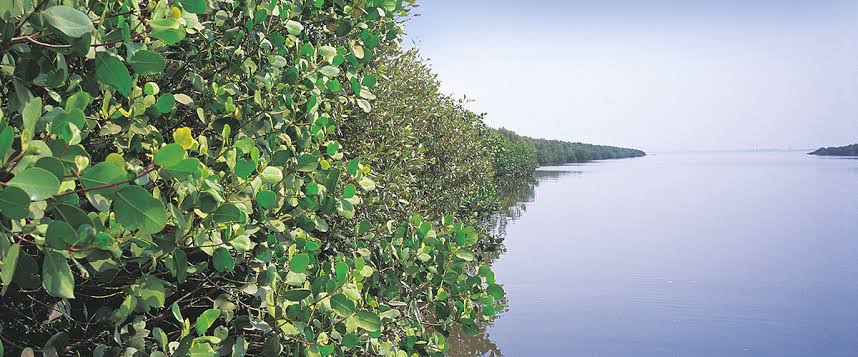 GLOBAL - World Wetlands Day marks the date of the adoption of the Convention on Wetlands on 2 February 1971 in Ramsar, Iran. The 2020 theme for World Wetlands Day is an opportunity to highlight wetland biodiversity, its status, why it matters and to promote actions to reverse its loss. On this account, Mr Anup Mathew, Sr. Vice President & Business Head, Godrej Construction, Godrej & Boyce, in conversation with The CSR Journal, highlights the importance of mangrove conservation. Mangroves are coastal forests. The ecosystem of mangroves establishes and grows at the interface of land and water bodies like the sea, creeks, estuaries, bays and lagoons, most commonly found in the inter-tidal area, between the high tide and the low tide. Unlike other terrestrial plants, mangroves have the unique ability to survive and grow in an unstable saline environment. This ability comes from adaptations like natural filters in roots (to control salt intake), salt glands (to exclude excess salt), cable roots (for fixing the tree in marsh), breathing roots (to compensate oxygen deficiency in soil), stilt roots (for support), lenticel glands (for exchange of gases between the plant and the atmosphere) and viviparous germination (seeds germinate and produce primitive shoot and roots on parent tree). These adaptations are not found in any other types of plants. READ MORE GLOBAL What the mighty mangrove tells us about our broken relationship with nature  GLOBAL - Mangroves and the rest of the natural world offer value to humanity at no cost. Every year, the environment provides about $125 trillion in free services, for example pollination, water filtration, oxygen production and flood protection. This is worth more than the entire global GDP. The planet is like a bank account where every living thing pays in deposits, but we are the one species that keeps withdrawing funds. Our overuse of our natural resources is costing us $6 trillion every year. By 2050, those costs could rise to $28 trillion. Over the last century, we have become out of balance with nature. Today, 96% of mammals are human beings and our domesticated livestock. Only 4% accounts for everything else, from elephants to tigers to pandas. 70% of birds are our domesticated poultry, mostly chicken. In the ocean, 90% of the large fish – from sharks to tuna to cod – have been removed in the last hundred years. And 40% of insect species in the world are now endangered, too. In 2019, the United Nations reported that around one million animal and plant species are threatened with extinction, many of them within decades. READ MORE AFRICA Illegal industrial fishing hampers small-scale African fisheries  MADAGASCAR - A new analysis shows that industrial fishing fleets operating in the waters of African countries and territories spend an average of nearly 6% of their fishing effort inside zones set aside for small-scale fisheries In some countries, foreign fleets spend the bulk of their time — more than 90% in Somalia, for example — within the prohibited zone Communities along Africa’s coasts are often dependent on fish as a source of food and protein But incursions by large-scale fishing vessels, called “the most common form of illegal fishing in the region,” can threaten the sustainability of the resource, create conflict over it, and endanger the lives of fishers themselves Fish are an indispensable source of food and protein for communities in many African countries. But the growth in industrial-scale fishing fleets around the continent has put that resource and the livelihoods it supports at risk, according to a recent analysis. READ MORE East African fish in need of recovery  EAST AFRICA - A study of East African coral reefs has uncovered an unfolding calamity for the region: plummeting fish populations due to overfishing, which in turn could produce widespread food insecurity. In a newly published paper in the journal Marine Ecology Progress Series titled "Coral reef fish communities, diversity, and their fisheries and biodiversity status in East Africa," WCS Senior Conservation Zoologist Dr. Tim McClanahan reports that overfishing is widespread across the region. The remedy, says the sole author of the study, is to recognize the need to rebuild fish stocks to ensure they are providing the maximum possible catch for the developing countries of Kenya, Tanzania, and Mozambique. The African continent has among the highest human population growth rates and associated food security issues. "Whereas fish stocks within marine parks and areas in distant or turbulent locations were found to be at healthy levels, coastal areas open to fishing were another story," said McClanahan. "We have found that fish catches have been declining in Africa in recent years by a million tons a year, and this study shows that much of this decline in East Africa is due to declining fish stocks." READ MORE AMERICAS Volunteers Sought for Large-Scale Mangrove Cleanups 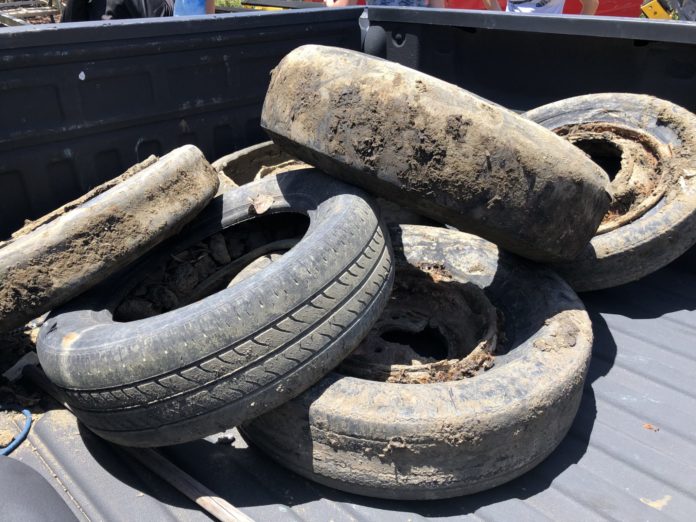 St. Thomas - A large-scale community cleanup of the St. Thomas East End Reserve is now expanding to include Salt River, St. Croix and Coral Bay, St. John and seeks community-minded volunteers on each island. Organizers of the 3rd Annual Great Mangrove Cleanup estimate that nearly 5,000 pounds of trash were removed from mangrove shorelines of the East End Reserve in previous 2018 and 2019 events, with more than 200 community members participating. Cleanup planners expect a similar turn out again this year in hopes of removing more than 1,000 pounds of marine and hurricane-deposited debris. Tires were pulled out of the mangroves during the 2019 cleanup. (Photo by Kristin Wilson Grimes. “It’s easier than ever to participate in the 2020 Great Mangrove Cleanup with events happening this year on St. Thomas, St. John, and St. Croix,” shares Kristin Wilson Grimes, an assistant professor of watershed ecology at the University of the Virgin Islands. “We invite the U.S. Virgin Islands community to join us to help keep our mangrove shorelines clean and thriving!” READ MORE Schools assist in Réserve Naturelle’s mangrove, sea grape re-planting project 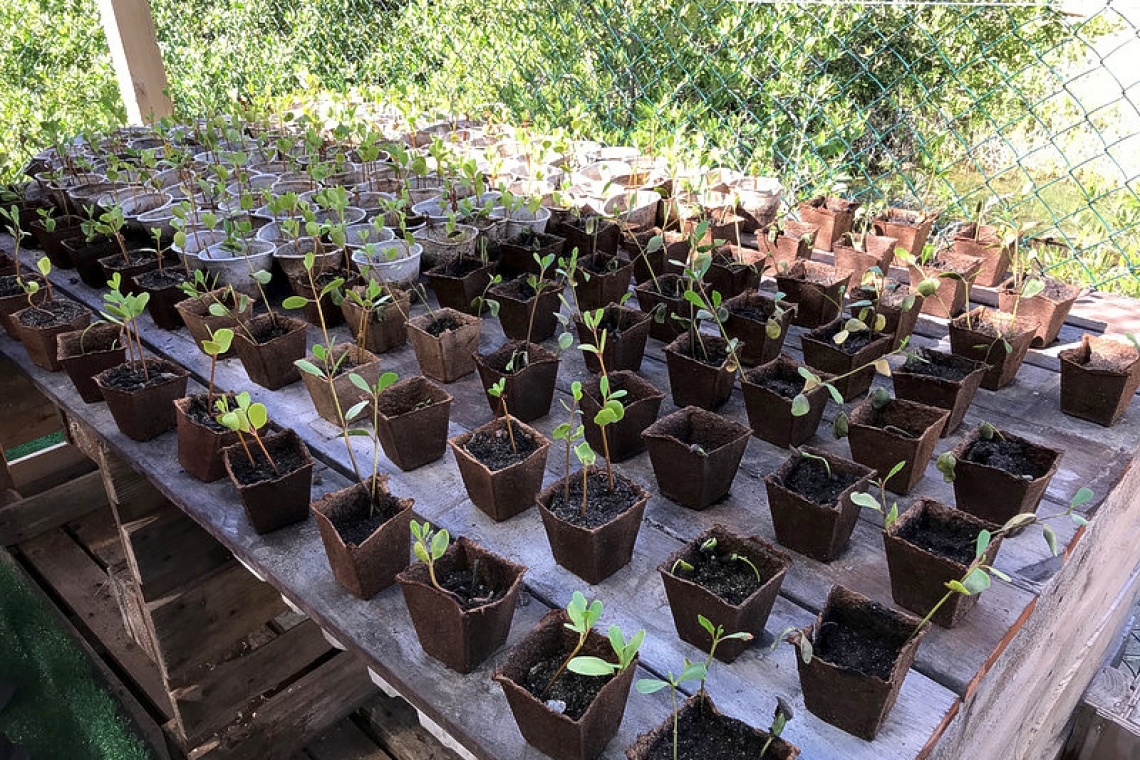 ST MARTIN - Schoolchildren have been enlisted by Réserve Naturelle to assist with its mangrove re-planting project as a way of stimulating awareness of biodiversity and importance of protecting the environment. Mangroves in the ponds were largely destroyed by Hurricane Irma in 2017. Réserve Naturelle Director Nicolas Maslach on Friday, joined by rangers from the Réserve, gave a presentation of the project at the mangrove nursery in Orient Bay to board members of Rotary Club St. Martin Nord which funded 50 per cent of the project cost for 24,250 euros. Some 40 per cent of the donation has been forwarded in advance to the Réserve. The funding was made possible back in 2018 thanks to four Michelin-starred chefs who organized a charity gala dinner in France for 90 guests at 550 euros per head with part of the proceeds going to Rotary Club. At the nursery four species of mangrove seedling in small pots were arranged on tables under shade along with one for sea grapes. The mangrove seedlings stay in the pots about four to five months before the roots start to grow out and then they are planted, explained ranger Ashley Daniel. They are planted in different areas depending on whether they are suited to saltwater or freshwater or earth. Daniel added, the mangroves are planted in a quadrant of squares which makes it easier to determine how many mangroves die and how many survive and thrive. READ MORE Bay Project remembers late philanthropists at groundbreaking for Mangrove Bayou  USA - It’s been a long time coming, but the official groundbreaking for the Mangrove Bayou of the Bay Project has just taken place A number of stakeholders joined in on the celebration, kicking off the start of construction on the project that will completely transform 53 acres of the Bayfront over the next 10 to 15 years But the ceremony also held another deeper meeting. Attendees were able to remember the generosity of two of their first donors, Charles and Margery Barancik Mangroves don’t always get the credit they deserve. They work hard to clean the water, keep runoff out, provide a habitat for the birds and deposit key nutrients to the underwater ecosystem. “But they do it very quietly. We take the mangroves for granted almost," said Rebecca Barancik. "They’re not very showy like all of our beautiful flowering plants and our oak trees that are huge and you can’t avoid them. It just reminded me of Margery and Chuck, the way they very quietly, very humbling worked to make a difference in this community.” READ MORE ASIA How Sri Lanka's mangrove forests can save lives 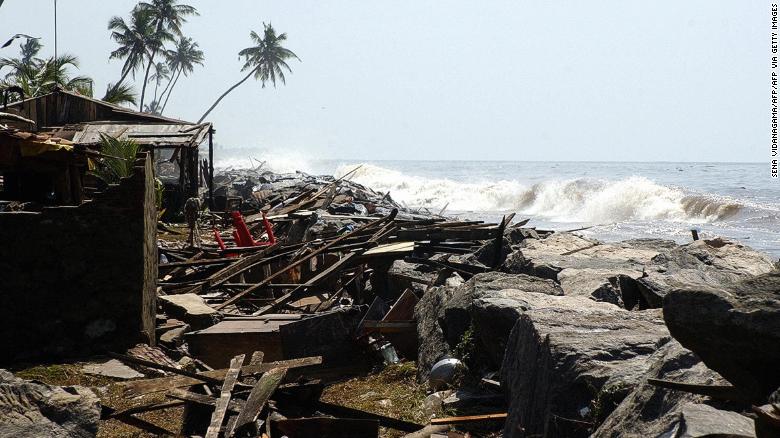 SRI LANKA - On December 26, 2004, a cataclysmic tsunami struck the coasts of countries in South and Southeast Asia. Sri Lanka was one of the worst affected nations -- the wall of water devastated the island's southern and eastern coasts. However, the tsunami's impact was uneven with some places suffering far more damage than others. Scientists assessing the landscape after the disaster discovered that some areas which emerged relatively unscathed were protected not by sophisticated warning systems or barriers -- but by their ancient mangrove forests. n 2015, Sri Lanka announced that it would protect all of its mangroves -- the first country to make that declaration. The tsunami experience wasn't the only factor in the decision. Mangrove forests help to create healthy seas because they act as nurseries for fish, prawns, crabs and other marine animals that breed among the trees' stilt-like roots. READ MORE Legal obstacles to territorial rights recognition, sustainable production and conservation on forest peoples’ lands 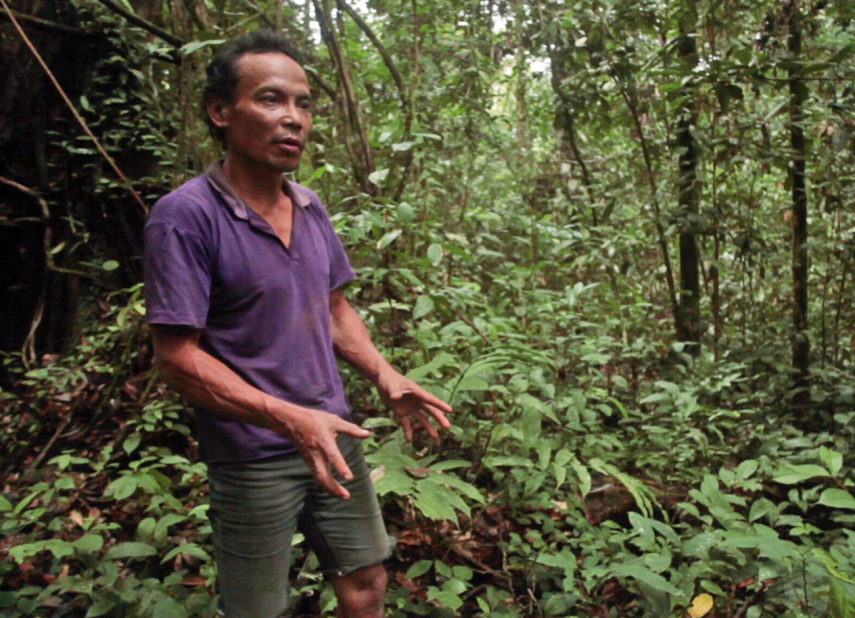 INDONESIA - Most forest peoples in Southeast Asia practice mixed economies in which mobile foraging is a key element in their livelihood strategies, based on hunting, fishing, gathering, shifting cultivation and, increasingly, small-scale commodity production. As well as being central to their identities and economies, such activities are regulated by customary law. In both Indonesia and Malaysia, under the constitutions and other laws, custom is recognised as a source of rights in partial conformity with international human rights laws on indigenous peoples. In practice, rights are often not formally recognised, are readily extinguished by official land designation and, even where recognised, rarely extend beyond farmland to include wider foraging areas. Customary law communities are thus highly vulnerable when their forestlands are allocated to developers of large-scale monocrops such as oil palm and pulpwood. Voluntary ‘sustainability’ standards now require companies to respect customary rights and communities’ free prior and informed consent to land-use plans designed to ensure both development and forest conservation, but legal limitations hinder good practice. Based on detailed field studies and legal reviews, the paper finds that due to these limitations, national legal and procedural reforms are needed if voluntary standards are to protect rights and forests. READ MORE Mangrove swamps... a tourist attraction for the fans at the World Cup 2022 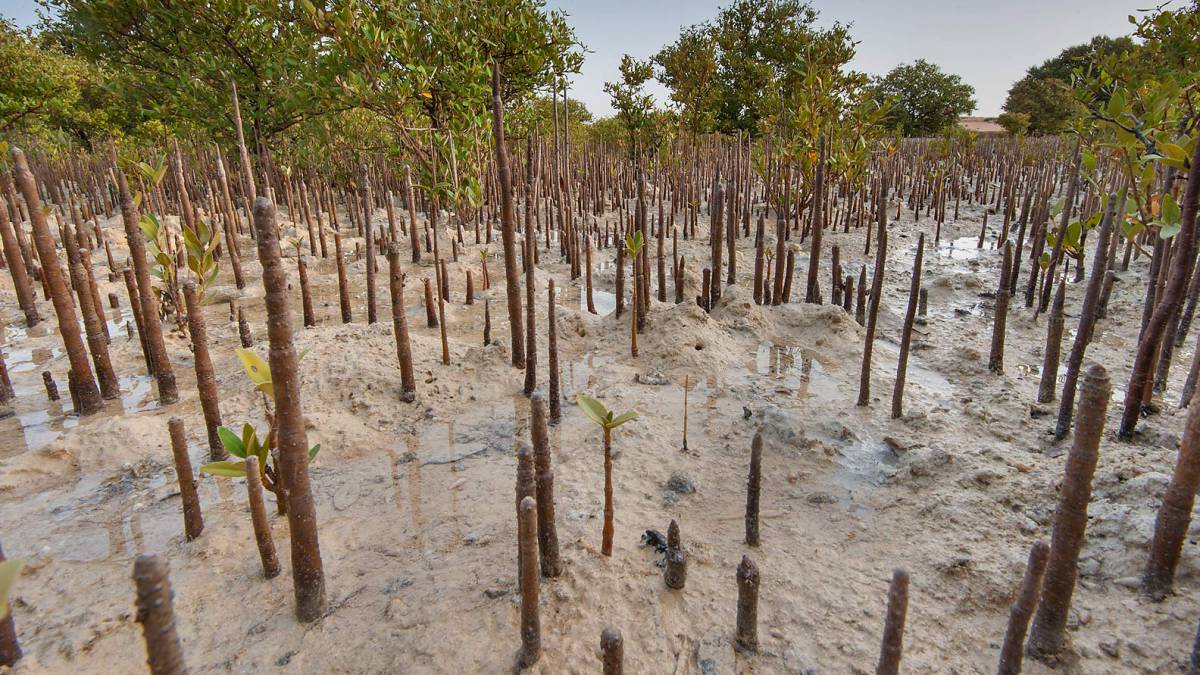 QATAR - Despite the small size of the Arab country and the lack of historical attractions, Qatar has a number of tourist sites which the Supreme Committee for Delivery and Legacy, responsible for the preparation of the World Cup, is aiming to promote as attractions which can be visited and enjoyed during the tournament.One of these are the Mangrove Swamps located to the north of the coastal city of Al Khor, North Qatar, close to the Al Bayt stadium, one of the venues which will host the World Cup, and the second largest in the country.The mangrove swamp is a perfect place for rowing in kayaks. The area is also known as Purple Island, due to the purple dye produced for thousands of years from the sea snails which live in the region. READ MORE Saudi Arabia's shrimp fishing ban comes into force  SAUDI ARABIA - Saudi Arabia’s annual shrimp fishing ban came into force on Saturday, with the threat of hefty fines for those who break the rules. The six-month ban is part of efforts to restore shrimp stocks along the Gulf coast and bring longevity to an important economic resource. Shrimp fishing and farming are becoming increasingly important to the kingdom as it looks to reduce its dependence on oil. Crown Prince Mohammed bin Salman’s Vision 2030 specified that the development and expansion of the aquaculture sector was important for food security and job creation in rural areas. Those caught flouting the ban face fines of up to 10,000 riyals. The ban will be lifted at the end of July, as the fishing season begins to pick up. The kingdom is also investing in farmed shrimp as part of the aquaculture development program. READ MORE OCEANA Land use change has a big impact on the carbon stored in mangroves  AUSTRALIA - Mangrove forests are important to the livelihoods of millions of people living along coastlines, providing fish resources, protecting communities from storms and coastal erosion, and myriad other benefits. However, these benefits are severely undervalued, so mangroves are prone to conversion to other land uses with a more immediate economic benefit. This unique wetland ecosystem continues to be lost at a rapid rate, and the impacts this mangrove loss has on the important benefits they provide is poorly known. One particular benefit that mangroves provide is their ability to suck up carbon emissions from the atmosphere and store them as “blue carbon” in their wood and waterlogged soils. This makes mangroves an effective tool to mitigate global climate change. But what happens to this huge amount of stored carbon when mangroves are disturbed? READ MORE |
CHILDREN'S ART CALENDAR
|
|
Mangrove Action Project Click here to view past newsletters
|
|
-
The community of adults and youth in Cayman Islands has come together recently to release a series of educational videos. Each is geared to...
-
By Alfredo Quarto, Program & Policy Director Co-founder, MAP There is a rather urgent situation concerning the bio-invasion of the Son...
-
By: Isabel Robinson, MAP Volunteer Intern Some months ago I decided to come to Thailand and do an internship in mangrove conservation, ...
MAP News Issue #596 = April 20, 2024
ENTRIES NOW OPEN! Mangrove Photography Awards 2024 10 Years Celebrating Mangroves GLOBAL - MAP has launched our 10th Mangrove Photograp...




